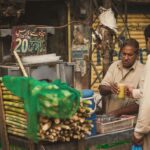The Heart of Netherland Amsterdam
 Amsterdam is the largest city and the capital of the Netherlands. The city has got a history of more than 800 years. The city is one of the most popular tourist destinations in Europe, receiving more than 4.63 million international visitors annually, this is excluding the 16 million day trippers visiting the city every year. The number of visitors has been growing steadily over the past decade. Amsterdam is the financial and business capital of the Netherlands. Amsterdam is currently one of the best European cities in which to locate an International Business. It is ranked fifth in this category and is only surpassed by London, Paris, Frankfurt and Barcelona. Many large corporations and banks have their headquarters in Amsterdam, including Akzo Nobel, Heineken International, ING Group, Ahold, TomTom, Delta Lloyd Group and Philips. KPMG International’s global headquarters is located in nearby Amstelveen, where many non-Dutch companies have settled as well, because surrounding communities allow full land ownership, contrary to Amsterdam’s land-lease system. The tallest building in Amsterdam, the Rembrandt Tower, is situated there, as is the headquarters of Philips. The Amsterdam Stock Exchange (AEX), now part of Euronext, is the world’s oldest stock exchange and is one of Europe’s largest bourses. It is situated near Dam Square in the city’s centre.
Amsterdam is the largest city and the capital of the Netherlands. The city has got a history of more than 800 years. The city is one of the most popular tourist destinations in Europe, receiving more than 4.63 million international visitors annually, this is excluding the 16 million day trippers visiting the city every year. The number of visitors has been growing steadily over the past decade. Amsterdam is the financial and business capital of the Netherlands. Amsterdam is currently one of the best European cities in which to locate an International Business. It is ranked fifth in this category and is only surpassed by London, Paris, Frankfurt and Barcelona. Many large corporations and banks have their headquarters in Amsterdam, including Akzo Nobel, Heineken International, ING Group, Ahold, TomTom, Delta Lloyd Group and Philips. KPMG International’s global headquarters is located in nearby Amstelveen, where many non-Dutch companies have settled as well, because surrounding communities allow full land ownership, contrary to Amsterdam’s land-lease system. The tallest building in Amsterdam, the Rembrandt Tower, is situated there, as is the headquarters of Philips. The Amsterdam Stock Exchange (AEX), now part of Euronext, is the world’s oldest stock exchange and is one of Europe’s largest bourses. It is situated near Dam Square in the city’s centre.
The most important museums of Amsterdam are located on the Museumplein (Museum Square), located at the southwestern side of the Rijksmuseum. It was created in the last quarter of the 19th century on the grounds of the former World’s fair. The north eastern part of the square is bordered by the very large Rijksmuseum. In front of the Rijksmuseum on the square it is a long, rectangular pond. This is transformed into an ice rink in winter. The north-western part of the square is bordered by the Van Gogh Museum, Stedelijk Museum, House of Bols Cocktail & Genever Experience and Coster Diamonds. The southwestern border of the Museum Square is the Van Baerlestraat, which is a major thoroughfare in this part of Amsterdam. The Magere Brug (“Skinny Bridge”) is a bridge over the river Amstel in the city centre of Amsterdam. It connects the banks of the river at Kerkstraat (Church Street), between Keizersgracht (Emperors’ Canal) and Prinsengracht (Princes’ Canal).
The central section of the Magere Brug is a bascule bridge made of white-painted wood. The present bridge was built in 1934. The first bridge at this site was built in 1691 as Kerkstraatbrug and had 13 arches. Because this bridge was very narrow, the locals called it magere brug, which literally means “skinny bridge”. In 1871 the state of the bridge was so bad that it was demolished and replaced by a nine-arched wooden bridge. Fifty years later this bridge also needed to be replaced. Architect Piet Kramer made several designs for a steel and stone bridge, but the city decided to replace it with a new bridge that looked the same as the previous, only slightly bigger. In 1934 the bridge was demolished and replaced. The last major renovation was in 1969. Until 1994 the bridge was opened by hand, but now is opened automatically.
The Royal Palace in Amsterdam (Dutch: Koninklijk Paleis Amsterdam or Paleis op de Dam) is one of three palaces in the Netherlands which are at the disposal of the monarch by Act of Parliament. The palace was built as a city hall during the Dutch Golden Age in the 17th century. The building became the royal palace of King Louis Napoleon and later of the Dutch Royal House. It is situated on the west side of Dam Square in the centre of Amsterdam, opposite the War Memorial and next to the Nieuwe Kerk.
The 800 year old Oude Kerk (“old church”) is Amsterdam’s oldest building and oldest parish church, founded in 1213 and finally consecrated in 1306 by the bishop of Utrecht with Saint Nicolas as its patron saint. After the Reformation in 1578 it became a Calvinist church, which it remains today. It stands in De Wallen, now Amsterdam’s main red-light district. The square surrounding the church is the Oudekerksplein.
The Albert Cuyp Market is a street market in Amsterdam, The Netherlands, on the Albert Cuypstraat between Ferdinand Bolstraat and Van Woustraat, in the De Pijp area of the Oud-Zuid district of the city. The street and market are named for Albert Cuyp, a painter from the 17th century. The market began as an ad hoc collection of street traders and pushcarts. By the beginning of the 20th century, this had become so chaotic that in 1905, the city government decided to set up a market, at first only held on Saturday evenings. In 1912, the market became a daytime market open six days a week. Originally the street was accessible while the market was taking place, but for years now the street has been completely closed off to traffic during market hours.








